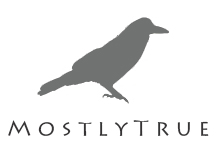Statement
Sindh information minister Sharjil Memon on June 27 said that extortion has long been a problem in Karachi, according to The News and Geo Tv. According to him, extortion has been going on in Karachi for the past 30 years.
Background
Citizens Police Liaison Committee (CPLC) Chief Ahmed Chinoy told Truth Tracker that the CPLC helpline receives at least 1,200 extortion complaints per month. However, these are only the complainants who have come forward with their complaints. According to Dawn, in 2013 alone, 57 extortion suspects were arrested on the complaints of various traders and industrialists, but none of the suspects was was formally charged under Section 7 of the Anti-Terrorism Act since no complainant agreed to becoming a party for the prosecution.
Talking to Truth Trackers, a milk trader from Jamshed Road said that he keeps a loaded pistol with him at all times. “The bakery in front of my shop had received an extortion slip for Rs 400,000 while the shop next to it received one for Rs 300,000,” he said. “Two days ago, the baker was shot dead in front of us. I received a slip for Rs 500,000. Tell me, what do I do?”
The chief reporter for Associated Press of Pakistan, Karachi, Khushnood Ali Shaikh, was killed on June 24 in a road accident, said The News. But his relative believe that his death was not an accident since the journalist had been receiving extortion threats since building a new house in the Gulistan-e-Jauhar area and had recently received a receipt for Rs one million.
Between 40 to 50 traders have been killed so far this year in the city, according to the Atiq Mir, chairman of the main traders’ organization in Karachi.
Check
When asked how had he gotten this information, Sharjil Memon said that it was an open secret, which is true to some extent because Karachi has always been the economic hub of the country.
He said that before there had only been one party, but now there were many stakeholders so bhatta (extortion) collection had grown manifold in the past few years. In his statement, he was referring to the Pakistan People’s Party’s former coalition partner in Sindh, the Muttahida Qaumi Movement, which is widely perceived to have pioneered the extortion culture of the city since it was formed in 1984.
Truth Tracker talked to traders in various areas of Karachi. One trader in a middle-class residential area of Gulshan-e-Iqbal said that he did not remember paying extortion 20 years ago but recalled that it did exist on a small scale.
Another trader from F. B. Area, another middle-class residential-cum-commercial area, said that 25 years ago, the Jamaat-e-Islami had been very active in collecting animal hides and fitra (voluntary alms). He recalled that sometimes they weren’t exactly friendly.
The chief of the main traders’ organization in Karachi said that payment of ‘protection money’ was the norm around 25 years ago. This was confirmed by a 40-something worker of the MQM who said that the party used to collect protection from people. But he denied that the party was currently involved in extortion.
Details
Collection of animals’ hides on Eid-ul-Azha - whether voluntary or not - is synonymous with extortion. Background interviews with reporters and journalists revealed that the pioneer of this trend was actually the Jamaat-e-Islami. The party had needed funds for its welfare wing, Al-Khidmat Foundation, and decided to ask for voluntary donations for animal hides.
Traders and journalists both agree that extortion had definitely been present before the 1980s as well, but wasn’t as widespread or as lethal as today. When the MQM entered the political arena, it organised the activities and used them to their optimum advantage.
However, the dynamics of bhatta (extortion) collection have changed over the past few years. Its not just a couple of parties that are involved. As other organisations and parties have increased their stakes in the metropolis, the pond has quite a few alligators and all the fish, big or small, banned or legal, have no choice but to deal with them. Often times, a trader pays extortion to as many as four or five groups.
Methods of collecting the money have changed too, over time. Though fitra and animal hides are still collected, this is done in seasons: fitra in Ramzan while hides at Eid-ul-Azha. Extortion chits, hand grenades, crackers, and even text messages are used to send direct threats, said Iftikhar Ali, a trader and victim of extortion.
Ruling
Truth Tracker, on the basis of its research work and statements of various people, rules Memon’s statement mostly true.



Comments